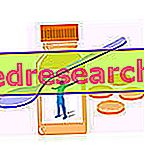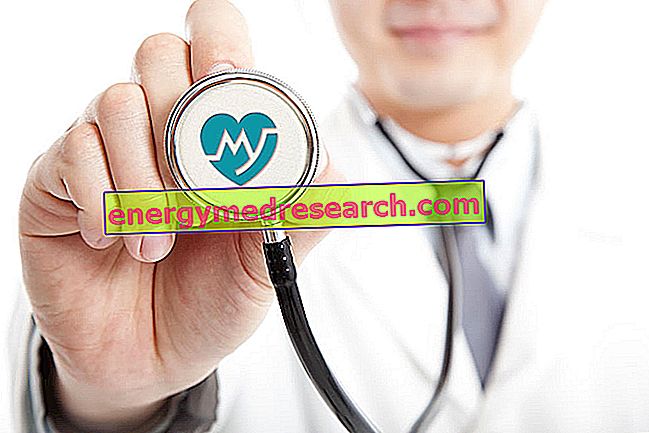Introduction
Antiplatelet drugs are drugs that can hinder platelet aggregation, reducing the risk of thrombus formation.

Also known as antiplatelet agents, these drugs are used in patients suffering from cardiovascular diseases or who are in particular risk conditions for thrombus formation. The formation of the latter causes obstruction of the blood vessels (both venous and arterial) leading to more or less serious consequences, sometimes fatal, depending on the type of vessel that is affected by the obstruction. In particular, the formation and detachment of a thrombus can lead to: thrombophlebitis, superficial thrombosis, deep vein thrombosis, pulmonary embolism, coronary embolism, heart attack and stroke.
The antiplatelet drugs currently available are different and act through different mechanisms of action. The choice to use a certain type of drug rather than another must be made by the doctor.
Dispensing of antiplatelet drugs can only be done in pharmacies and only upon presentation of a medical prescription. However, some of them are available exclusively for hospital use.
What are
What are antiplatelet drugs?
Antiplatelet drugs are a category of drugs used to prevent the formation of blood clots and the dangerous consequences that could result (thrombotic events). More in detail, antiplatelet drugs - acting through different mechanisms of action - are able to inhibit platelet activation during blood clotting processes.
The platelet antiaggregating agents currently used in the therapeutic field are many and belong to different classes of drugs capable of acting more or less directly on the mechanisms underlying the platelet aggregation, therefore at the base of coagulation and thrombus formation.
During the article, the different types of antiplatelet drugs and their mechanism of action will be briefly described.
Therapeutic indications
When do you use antiplatelet drugs?
As mentioned, antiplatelet drugs are used in all those patients suffering from cardiovascular disorders or who suffer from particular conditions due to which there is a high risk of developing thrombus.
More in detail, among the main indications of antiplatelet drugs, we recall:
- Prevention of major athero-thrombotic events after myocardial infarction or stroke, in patients with unstable angina pectoris, or with chronic stable angina pectoris;
- Prevention of cardiovascular events in patients with established atheromatous disease and in hemodialysis patients;
- Prevention of thrombosis in patients undergoing extracorporeal circulation;
- Treatment of arterial thromboembolytic disease.
Depending on the medicine used and the type of active ingredient contained, the therapeutic indications may be slightly different.
Did you know that ...
Antiplatelet drugs are also used in patients suffering from atrial fibrillation in association with some types of moderate-intensity anticoagulants.
COX-1 inhibitors
Cycloxygenase inhibitors as Antiplatelet Drugs
Among the type 1 cyclooxygenase inhibitors used as antiplatelet agents in the therapeutic field we find:
- Acetylsalicylic acid (Cardioaspirin®) is a well-known non-steroidal anti-inflammatory drug - NSAID - which has proved to be an excellent antiplatelet agent when administered at low doses - 75-300 mg);
- Indobufene (Ibustrin®), another type of NSAID;
- The triflusal (Triflux®).
To prevent thrombus formation, these antiplatelet drugs are administered orally .
Action mechanism
Acetylsalicylic acid and triflusal are irreversible inhibitors of the enzyme cyclooxygenase type 1 (COX-1), responsible for the synthesis of prostaglandins and, in particular, PGH2 . From the PGH2 derive other prostaglandins and the thromboxane A2 (TXA2). The latter is released following platelet degranulation and, acting as a second messenger, recalls other platelets favoring the formation of the clot. Blocking the synthesis of TXA2, therefore, it is possible to prevent platelet aggregation, therefore, the formation of the clot.
Through a long-term therapy with this type of drugs a cumulative effect of platelet inactivation is obtained, since COX-1 is permanently inhibited and they - being denucleated (ie without nucleus) - are not able to synthesize it again .
Indobufene, on the other hand, acts as a reversible inhibitor of platelet COX-1 ; however, its effectiveness is comparable to that of acetylsalicylic acid.
Side effects
Listing all the possible side effects of COX-1 inhibitors can be difficult, as each of the above active ingredients can cause side effects different from the others. However, among the possible common side effects, we recall:
- Headache;
- Dizziness;
- Gastrointestinal disorders;
- Haemorrhages.
PDE-3 inhibitors
Type 3 phosphodiesterase inhibitors such as antiplatelet drugs
Among the type 3 phosphodiesterase inhibitors commonly used to hinder platelet aggregation and thrombus formation, we find:
- Dipyridamole (Persantin®) which can be used either alone or in combination with acetylsalicylic acid (Aggrenox®);
- Cilostazol (Pletal®). Unlike other antiplatelet drugs, it presents specific and exclusive therapeutic indications for the treatment of intermittent claudication.
Both active ingredients are administered orally .
Action mechanism
Type 3 phosphodiesterase (PDE-3) is a particular type of enzyme responsible for the degradation of cAMP (cyclic adenosine monophosphate, or cyclic AMP if desired) in AMP (adenosine monophosphate). At platelet level, cAMP exerts an inhibitory action against aggregation and degranulation of the same. In contrast, AMP promotes platelet degranulation.
For this reason, through the inhibition of PDE-3, antiplatelet drugs such as dipyridamole and cilostazol induce an increase in the concentration of cyclic AMP inside the platelets, thus fulfilling the antiplatelet therapeutic action.
Side effects
Also in this case the side effects that can occur vary depending on the active ingredient used. However, among the common side effects that may arise, we find:
- Headache;
- Nausea, vomiting and diarrhea;
- Haemorrhagic tendency;
- Angina pectoris;
- Dizziness or dizziness.
P2Y Receptor Antagonists
P2Y Purinergic Receptor Antagonists as Antiplatelet Drugs
Another type of antiplatelet drug is represented by P2Y receptor antagonists present in platelets. These are mainly prodrugs that, once transformed into the corresponding active metabolite, interact with the P2Y receptor whose endogenous substrate is the ADP. Among the active ingredients used in therapy, we find:
- Ticlopidine (Tiklid®);
- The clopidogrel (Plavix®);
- The ticagrelor (Brilique®),
- The prasugrel (Efient®).
As with PDE-3 inhibitors, some P2Y receptor antagonists can also be administered in combination with acetylsalicylic acid .
Antiplatelet drugs P2Y receptor inhibitors are usually administered orally .
Action mechanism
As can be guessed from their name, the antiplatelet drugs in question act as P2Y receptor antagonists, of which there are two forms: P2Y1 and P2Y12 . The substrate of these receptors is represented by ADP (adenosine diphosphate), a nucleotide that plays a crucial role in the processes of platelet aggregation, therefore in the formation of blood clots and thrombi.
In detail, following the interaction of ADP with the P2Y1 receptor, there is a change in the shape of the platelets, the mobilization of intracellular calcium and the beginning of platelet aggregation . Following the interaction of the ADP with the P2Y12 receptor, instead, there is a notable increase in platelet aggregation due to the inhibition of adenylate cyclase (enzyme responsible for the conversion of ATP - adenosine triphosphate - in cAMP) which it follows a lowering of cAMP levels which we recall being an inhibitor of platelet aggregation.
P2Y receptor antagonist antiaggregant drugs bind - in a more or less selective and reversible or irreversible manner, depending on the case - to the P2Y12 form, thus hindering ADP-mediated increase in platelet aggregation.
Side effects
Among the possible side effects induced by the anti-aggregating agents of P2Y receptor antagonists, we find:
- Thrombocytopenia;
- Neutropenia also severe;
- Thrombotic purpura;
- Increased risk of bleeding;
- Headache;
- dizziness;
- Nausea and diarrhea.
GP IIb / IIIa receptor antagonists
GP IIb / IIIa Platelet Receptor Antagonists as Antiplatelet Drugs
The antiplatelet drugs with antagonist action of the GP IIb / IIIa receptor are used in hospitals and are administered intravenously .
The use of this type of antiplatelet agent is carried out in association with acetylsalicylic acid and unfractionated heparin for:
- Prevent early myocardial infarction in patients with unstable angina;
- To prevent non-Q myocardial infarction (ie without electrocardiogram Q waves of necrosis) in patients who had the last episode of chest pain within the previous 24 hours and with electrocardiogram (ECG) changes and / or values high cardiac enzymes.
The active ingredients belonging to this group of antiplatelet drugs can have an antibody, peptide nature or non-peptide nature. More in detail, among these we find:
- Abciximab (ReoPro®) is a monoclonal antibody that - in addition to being used in the prevention of myocardial infarction in patients with unstable angina - is used in the prevention of ischemic-type cardiac complications in patients undergoing surgery. percutaneous on the coronary tree.
- Eptifibatide (Eptifibatide Accord®) is a synthetic peptide- type antagonist of GP IIb / IIIA.
- Tirofiban (Aggrastat®), a non-peptide antagonist of the GP IIb / IIIa receptor.
Action mechanism
The GP IIb / IIIa receptor is located at the platelet level; its natural substrate is represented by fibrinogen (or factor I of coagulation ). The latter is a glycoprotein that acts as a "bridge of connection" between two platelets through bonds with the GP IIb / IIIa receptors located, in fact, on different platelets. The antagonists of GP IIb / IIIa, therefore, by binding to the receptor (even if reversibly), prevent the binding with fibrinogen and consequently hinder platelet aggregation, therefore the formation of the blood clot and thrombus.
Side effects
Among the side effects that can occur and are common to all the anti-aggregating drugs antagonists of the GP IIb / IIIa receptor, we recall:
- Nausea;
- Headache;
- Thrombocytopenia;
- Hemorrhage;
- Pain and other reactions at the injection site.
Other antiplatelet agents
Antiaggregant drugs inhibitors of TXA2 receptors and synthesis
Picotamide (Plactidil®) is among the antiplatelet inhibitors of the thromboxane A2 receptor (TXA2) and its synthesis. It is an active ingredient administered orally that is able to carry out its anti-platelet aggregation activity through two mechanisms of action:
- Inhibits thromboxane synthase (enzyme that converts PGH2 to TXA2), thus preventing the synthesis of TXA2;
- It blocks the platelet receptors of TXA2, hindering platelet aggregation.
The use of picotamide is indicated above all in the treatment of thromboembolytic disorders in which an inhibition of platelet reactivity is required. The administration takes place orally and the main side effects consist in the onset of gastrointestinal disorders.
PAR-1 Receptor Inhibitors Anti-aggregating Drugs of Thrombin
Vorapaxar (Zontivity®) is an antiplatelet drug that works by inhibiting the PAR-1 thrombin receptor.
Thrombin, by binding to the PAR-1 receptor, activates it, favoring blood coagulation. Not surprisingly, it is believed that the activation of this type of receptor is implicated in the onset of thrombosis. The inhibition of the PAR-1 receptor, therefore, hinders the activation induced by the thrombin, therefore the formation of the thrombus.
Among the main undesirable effects induced by vorapaxar, we mention: anemia, hemorrhage, ecchymosis, hematoma, gastritis and hematuria. The active substance in question is administered orally .
Contraindications
When should anti-aggregation drugs not be used?
Since antiplatelet drugs include a wide range of active ingredients, each with its own mechanism of action and its own "target", the contraindications to their use can also vary greatly depending on the drug used. However, it is possible to state that the use of all or at least the majority of antiplatelet drugs is generally contraindicated:
- In case of known hypersensitivity to the active ingredient or to any of the excipients contained in the medicinal product to be used;
- In patients with severe hepatic impairment;
- In patients suffering from pathologies or who are in particular conditions capable of predisposing to the onset of bleeding.
Please note
For more detailed information on therapeutic indications, warnings, drug interactions, dosage and use, use during pregnancy and lactation, side effects and contraindications of antiplatelet drugs, see the reading of the medicinal product prescribed by the doctor who must use.



